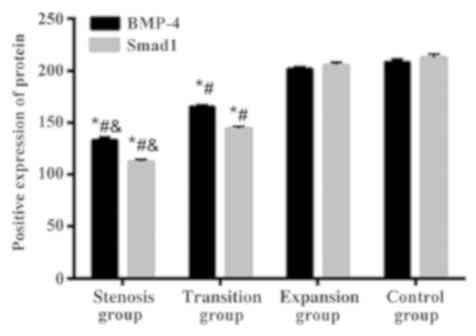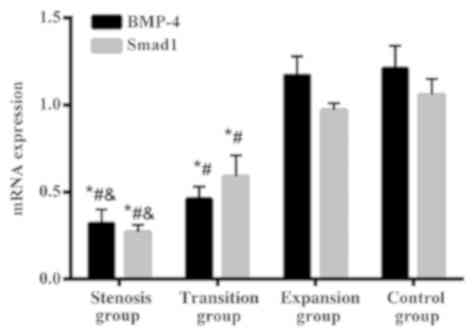|
1
|
Kenny SE, Tam PK and Garcia-Barcelo M:
Hirschsprung's disease. Semin Pediatr Surg. 19:194–200. 2010.
View Article : Google Scholar : PubMed/NCBI
|
|
2
|
Tam PK and Garcia-Barceló M: Genetic basis
of Hirschsprung's disease. Pediatr Surg Int. 25:543–558. 2009.
View Article : Google Scholar : PubMed/NCBI
|
|
3
|
Heanue TA and Pachnis V: Enteric nervous
system development and Hirschsprung's disease: Advances in genetic
and stem cell studies. Nat Rev Neurosci. 8:466–479. 2007.
View Article : Google Scholar : PubMed/NCBI
|
|
4
|
Zhang Z, Jiang Q, Li Q, Cheng W, Qiao G,
Xiao P, Gan L, Su L, Miao C and Li L: Genotyping analysis of 3 RET
polymorphisms demonstrates low somatic mutation rate in Chinese
Hirschsprung disease patients. Int J Clin Exp Pathol. 8:5528–5534.
2015.PubMed/NCBI
|
|
5
|
Kapur RP: Practical pathology and genetics
of Hirschsprung's disease. Semin Pediatr Surg. 18:212–223. 2009.
View Article : Google Scholar : PubMed/NCBI
|
|
6
|
Anderson SR, Lee I, Ebeling C, Stephenson
DA, Schweitzer KM, Baxter D, Moon TM, LaPierre S, Jaques B, Silvius
D, et al: Disrupted SOX10 function causes spongiform
neurodegeneration in gray tremor mice. Mamm Genome. 26:80–93. 2015.
View Article : Google Scholar : PubMed/NCBI
|
|
7
|
Ferreira R, Nilsson JR, Solano C,
Andréasson J and Grøtli M: Design, synthesis and inhibitory
activity of photoswitchable RET kinase inhibitors. Sci Rep.
5:97692015. View Article : Google Scholar : PubMed/NCBI
|
|
8
|
McGehee AM, Moss BJ and Juo P: The
DAF-7/TGF-β signaling pathway regulates abundance of the
Caenorhabditis elegans glutamate receptor GLR-1. Mol Cell
Neurosci. 67:66–74. 2015. View Article : Google Scholar : PubMed/NCBI
|
|
9
|
Dias JM, Alekseenko Z, Applequist JM and
Ericson J: TGFβ signaling regulates temporal neurogenesis and
potency of neural stem cells in the CNS. Neuron. 84:927–939. 2014.
View Article : Google Scholar : PubMed/NCBI
|
|
10
|
Wang XB, Wang W, Zhu XC, Ye WJ, Cai H, Wu
PL, Huang XY and Wang LX: The potential of asiaticoside for
TGF-β1/Smad signaling inhibition in prevention and progression of
hypoxia-induced pulmonary hypertension. Life Sci. 137:56–64. 2015.
View Article : Google Scholar : PubMed/NCBI
|
|
11
|
Hatakeyama Y, Nguyen J, Wang X, Nuckolls
GH and Shum L: Smad signaling in mesenchymal and chondroprogenitor
cells. J Bone Joint Surg Am 85-A. (Suppl 3):13–18. 2003. View Article : Google Scholar
|
|
12
|
Fukuda S and Taga T: Roles of BMP in the
development of the central nervous system. Clin Calcium.
16:781–785. 2006.(In Japanese). PubMed/NCBI
|
|
13
|
Weng Q, Chen Y, Wang H, Xu X, Yang B, He
Q, Shou W, Chen Y, Higashi Y, van den Berghe V, et al: Dual-mode
modulation of Smad signaling by Smad-interacting protein Sip1 is
required for myelination in the central nervous system. Neuron.
73:713–728. 2012. View Article : Google Scholar : PubMed/NCBI
|
|
14
|
Mohelnikova-Duchonova B, Oliverius M,
Honsova E and Soucek P: Evaluation of reference genes and
normalization strategy for quantitative real-time PCR in human
pancreatic carcinoma. Dis Markers. 32:203–210. 2012. View Article : Google Scholar : PubMed/NCBI
|
|
15
|
Pontarelli EM, Ford HR and Gayer CP:
Recent developments in Hirschsprung's-associated enterocolitis.
Curr Gastroenterol Rep. 15:3402013. View Article : Google Scholar : PubMed/NCBI
|
|
16
|
Mohammed AA and Gahukamble DB: Concordant
expression of Hirschsprung's disease in monozygous twins. Saudi Med
J. 21:200–201. 2000.PubMed/NCBI
|
|
17
|
Jiao CL, Chen XY and Feng JX: Novel
insights into the pathogenesis of Hirschsprung's-associated
enterocolitis. Chin Med J (Engl). 129:1491–1497. 2016. View Article : Google Scholar : PubMed/NCBI
|
|
18
|
Wang JH, Liu YZ, Yin LJ, Chen L, Huang J,
Liu Y, Zhang RX, Zhou LY, Yang QJ, Luo JY, et al: BMP9 and COX-2
form an important regulatory loop in BMP9-induced osteogenic
differentiation of mesenchymal stem cells. Bone. 57:311–321. 2013.
View Article : Google Scholar : PubMed/NCBI
|
|
19
|
Chen K, Xie W, Luo B, Xiao W, Teitelbaum
DH, Yang H, Zhang K and Zhang C: Intestinal mucosal barrier is
injured by BMP2/4 via activation of NF-κB signals after ischemic
reperfusion. Mediators Inflamm. 901530:20162014.
|
|
20
|
Arnold SJ, Maretto S, Islam A, Bikoff EK
and Robertson EJ: Dose-dependent Smad1, Smad5 and Smad8 signaling
in the early mouse embryo. Dev Biol. 296:104–118. 2006. View Article : Google Scholar : PubMed/NCBI
|
|
21
|
Hegarty SV, O'Keeffe GW and Sullivan AM:
BMP-Smad 1/5/8 signalling in the development of the nervous system.
Prog Neurobiol. 109:28–41. 2013. View Article : Google Scholar : PubMed/NCBI
|
|
22
|
Aubin J, Davy A and Soriano P: In vivo
convergence of BMP and MAPK signaling pathways: Impact of
differential Smad1 phosphorylation on development and homeostasis.
Genes Dev. 18:1482–1494. 2004. View Article : Google Scholar : PubMed/NCBI
|
|
23
|
Blank U, Seto ML, Adams DC, Wojchowski DM,
Karolak MJ and Oxburgh L: An in vivo reporter of BMP signaling in
organogenesis reveals targets in the developing kidney. BMC Dev
Biol. 8:862008. View Article : Google Scholar : PubMed/NCBI
|
|
24
|
Henningfeld KA, Rastegar S, Adler G and
Knöchel W: Smad1 and Smad4 are components of the bone morphogenetic
protein-4 (BMP-4)-induced transcription complex of the Xvent-2B
promoter. J Biol Chem. 275:21827–21835. 2000. View Article : Google Scholar : PubMed/NCBI
|
|
25
|
Chalazonitis A, Pham TD, Li Z, Roman D,
Guha U, Gomes W, Kan L, Kessler JA and Gershon MD: Bone
morphogenetic protein regulation of enteric neuronal phenotypic
diversity: Relationship to timing of cell cycle exit. J Comp
Neurol. 509:474–492. 2008. View Article : Google Scholar : PubMed/NCBI
|
















